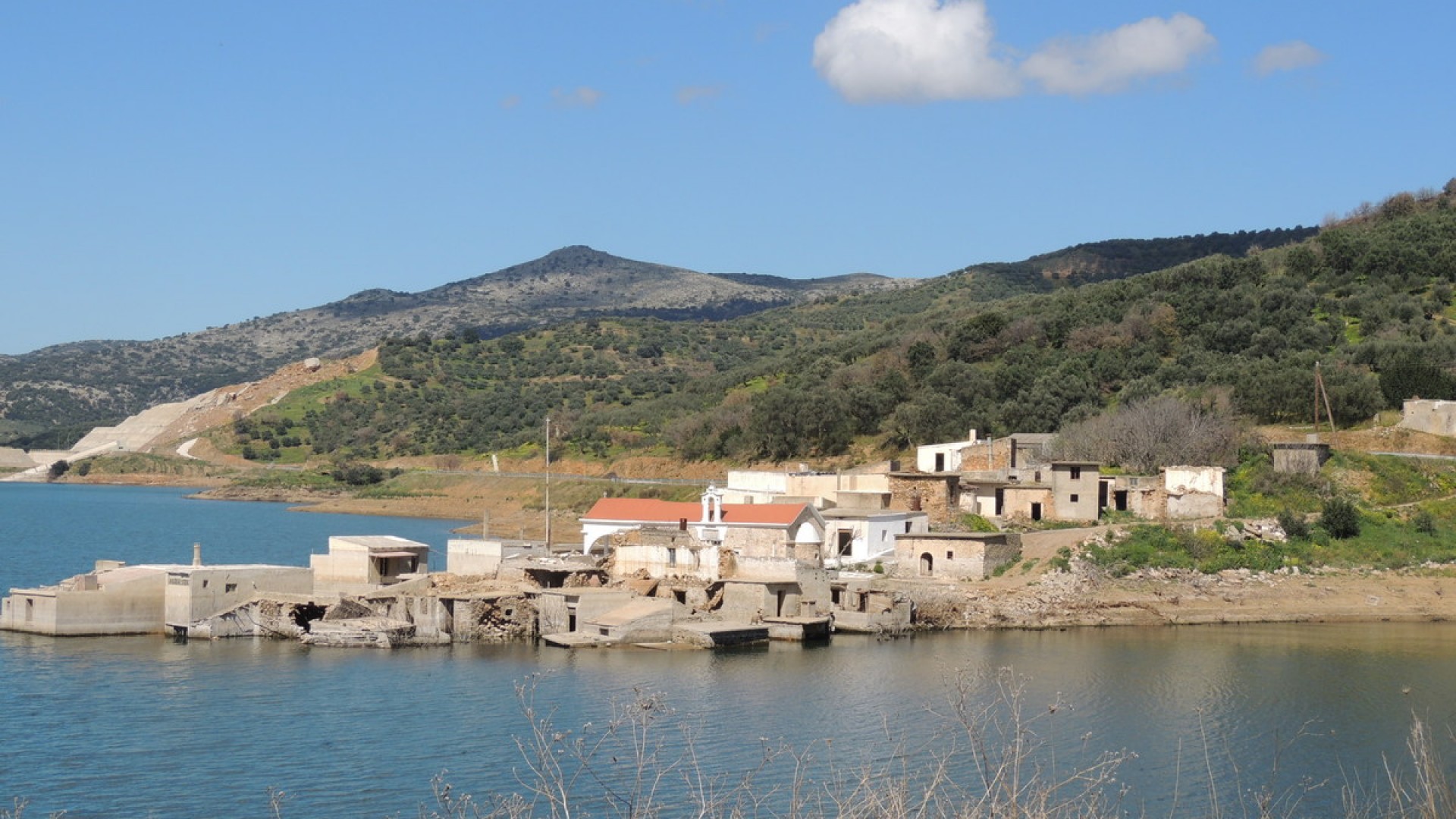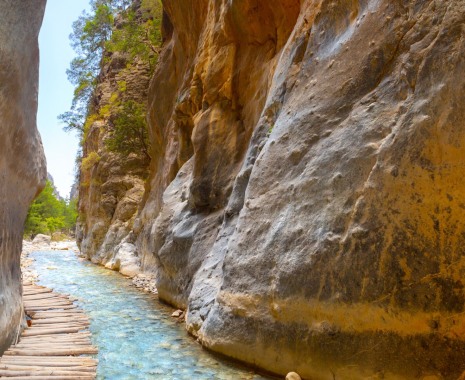Aposelemis Dam and the Sunken Village of Sfedili: Crete’s Forgotten Past Beneath the Water

Tucked away in the rolling hills of northern Crete, the Aposelemis Dam stands as both an impressive feat of engineering and a poignant reminder of the island's history. Built to address the region’s growing water needs, this massive reservoir now serves as the primary water source for many cities on the island, including Heraklion, Hersonissos, and Agios Nikolaos. But beneath its calm waters lies a story of loss and transformation— the sunken village of Sfedili, once a thriving community, now submerged in the name of progress.
Constructed between 2008 and 2012, the Aposelemis Dam was designed to collect water from the Aposelemis River and nearby catchment areas. The dam, with a height of 61 meters and a reservoir capacity of 27 million cubic meters, is the largest in Crete, addressing critical water shortages in one of Greece’s most visited islands. Its construction was vital for ensuring a stable water supply to support Crete’s growing population and booming tourism industry, especially during the dry summer months. However, this project came with a cost beyond the financial investment. The decision to build the dam meant the flooding of the small, picturesque village of Sfedili, a community that had stood for centuries.
Before the dam’s construction, Sfedili was a tiny but lively village with a rich history, surrounded by olive groves and farmland. It was home to several families who had lived there for generations, maintaining a close-knit community and a traditional way of life. However, the village’s low-lying position made it impossible to escape the rising waters of the newly created reservoir. As the dam filled, the village slowly began to disappear beneath the water. Today, when the water levels drop during the dry season, parts of Sfedili's abandoned stone houses and narrow streets emerge, offering a haunting glimpse into what once was. The sight is both eerie and mesmerizing, with half-submerged structures standing as silent witnesses to the past.
The Aposelemis Dam and its surrounding landscape offer a fascinating contrast between the old and the new. On one side, you have the modern dam, providing vital water resources for Crete, and on the other, the remnants of Sfedili, where time seems frozen. For visitors, the dam presents a unique opportunity to explore this juxtaposition of human ingenuity and the unavoidable sacrifice of history for progress. When the reservoir’s water levels recede, the partially visible ruins of Sfedili draw photographers and history enthusiasts alike, who are eager to capture the ghostly remains of the submerged village. It’s a place where the beauty of nature and the melancholy of abandonment come together in a powerful, emotional way. The creation of the Aposelemis Dam has also had a profound impact on the local environment. While the dam provides much-needed water to Crete’s arid regions, it has altered the natural flow of the Aposelemis River, impacting local ecosystems. However, the surrounding area has slowly adapted, with new wetlands forming around the reservoir that attract migratory birds and other wildlife.
Visitors to the Aposelemis Dam can take in the breathtaking views of the reservoir, with the surrounding hills reflecting on the calm waters. For those interested in history, the chance to see the submerged village of Sfedili (if water levels permit) offers a rare and thought-provoking experience. While exploring the area, you can also enjoy some of Crete’s natural beauty. Hiking trails wind through the hills around the dam, offering panoramic views of the reservoir and the countryside. It’s a peaceful and reflective spot, where you can witness how progress and history have collided to create a landscape unlike any other on the island.
The Aposelemis Dam and the sunken village of Sfedili tell a powerful story of Crete’s past and present. The dam, a symbol of modern progress, provides life-sustaining water to much of the island, but it also represents the inevitable trade-offs that come with development. Beneath its waters, Sfedili serves as a quiet reminder of the lives and history that were left behind. For visitors, this unique location offers not only stunning views but also a chance to reflect on the complex relationship between human needs, nature, and the past.


